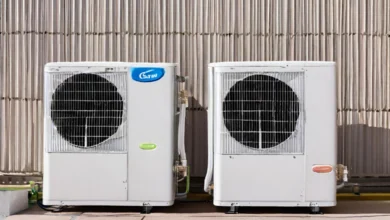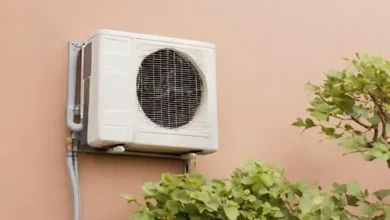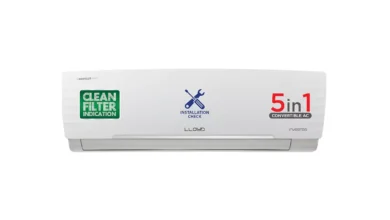Window Air Conditioner Types: Exploring Features, Benefits, and Ideal Use Cases
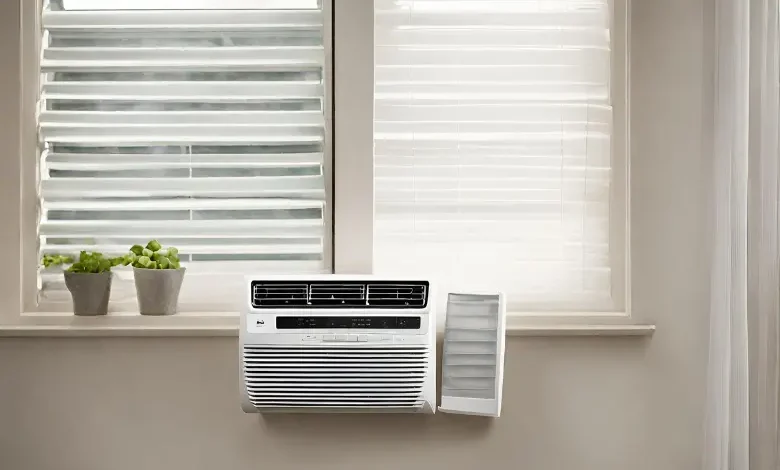
Air conditioning is a cornerstone of modern comfort, and among the diverse options available, window air conditioners stand out for their affordability and efficiency. In this detailed exploration, we will delve into the intricacies of various window air conditioner types, examining their features, benefits, and ideal use cases.
Also read: Best AC in India 2024
Window Air Conditioner Types
1. Traditional Window Air Conditioners

1.1 Overview
Traditional window air conditioners are the timeless solution for cooling individual rooms. These units, typically housed in a single box, are designed to fit into a window opening, offering a straightforward and cost-effective cooling solution.
1.2 Features
1.2.1 Single Thermostat Control
Traditional window units often feature a single thermostat control, allowing users to set and maintain the desired temperature in the room. While basic, this simplicity can be advantageous for users seeking straightforward operation.
1.2.2 Cooling Capacities in BTUs
Available in various cooling capacities measured in British Thermal Units (BTUs), traditional window air conditioners cater to different room sizes. Understanding the BTU rating ensures optimal cooling performance, preventing overuse or inefficiency.
1.3 Benefits
1.3.1 Affordable Upfront Cost
One of the primary advantages of traditional window units is their affordability. The upfront cost is generally lower compared to other types of air conditioners, making them accessible to a wide range of consumers.
1.3.2 Suitable for Renters
The ease of installation and removal makes traditional window air conditioners an ideal choice for renters. The units can be quickly installed during the warm season and removed when not needed, without leaving a permanent fixture.
1.4 Ideal Use Cases
1.4.1 Single-Room Cooling
Traditional window air conditioners are well-suited for cooling individual rooms, such as bedrooms or home offices. Their focused cooling capacity makes them effective in smaller spaces.
1.4.2 Budget-Conscious Consumers
For those on a budget, traditional window units offer an efficient cooling solution without the higher costs associated with some advanced features found in other types of air conditioners.
2. Slider/Casement Window Air Conditioners
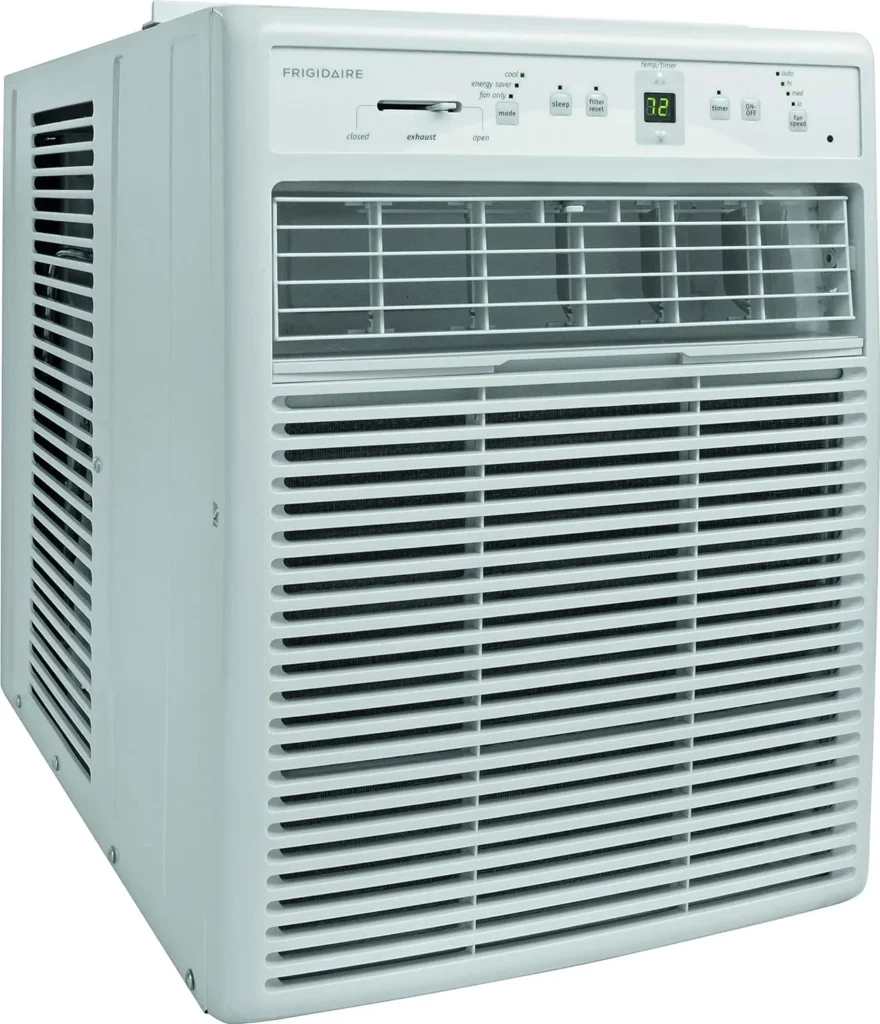
2.1 Overview
Slider/Casement window air conditioners are specially designed for spaces with sliding or casement windows, providing a tailored solution for rooms with unconventional window configurations.
2.2 Features
2.2.1 Narrower Design for Vertical Fit
To accommodate vertical sliding or casement windows, these units have a narrower design. This allows them to fit seamlessly within the limited vertical space available in such window configurations.
2.2.2 Adjustable Accordion-Style Panels
Equipped with adjustable accordion-style panels, these units ensure a secure fit within the window frame. This feature is crucial for maintaining a proper seal and preventing air leakage.
2.3 Benefits
2.3.1 Ideal for Non-Traditional Window Configurations
Slider/Casement window air conditioners provide an effective cooling solution for rooms where traditional window units cannot be accommodated. They are specifically designed to address the challenges posed by non-traditional window configurations.
2.3.2 Cooling Solution for Challenging Spaces
For rooms with unconventional window layouts or limited space for a traditional window unit, these air conditioners offer a practical and efficient cooling solution.
2.4 Ideal Use Cases
2.4.1 Apartments or Homes with Specific Window Types
Slider/Casement window air conditioners are ideal for apartments or homes with sliding or casement windows. They cater to the unique requirements of spaces with less common window designs.
2.4.2 Rooms Unsuitable for Traditional Window ACs
Rooms where traditional window air conditioners are impractical or impossible to install due to window constraints can benefit from the tailored design of slider/casement units.
3. Through-the-Wall Air Conditioners

3.1 Overview
Through-the-wall air conditioners provide a semi-permanent cooling solution by being installed directly into an exterior wall. This type combines aspects of window and split-system air conditioners.
3.2 Features
3.2.1 Flush Mounting with Exterior Wall
Through-the-wall units are designed to be mounted flush with an exterior wall. This design not only enhances aesthetics but also eliminates the need for a window opening, providing a more permanent installation.
3.2.2 Advanced Thermostat and Control Panel
These units often feature a more advanced thermostat and control panel compared to traditional window units. This allows for precise temperature control and may include additional settings for increased customization.
3.3 Benefits
3.3.1 Aesthetically Pleasing Installation
The flush mounting of through-the-wall units contributes to a more aesthetically pleasing installation. The absence of a protruding unit from the window enhances both the interior and exterior appearance of the building.
3.3.2 More Secure Installation
Installing through-the-wall air conditioners requires a more permanent setup, making them a more secure option compared to units that are easily removable from windows. This can be advantageous for long-term use.
3.4 Ideal Use Cases
3.4.1 Homes or Apartments with Restrictions on Window Units
In situations where window units are not allowed or desired, through-the-wall air conditioners provide an alternative. This is particularly relevant in apartments or buildings with strict regulations.
3.4.2 Permanent Cooling Solutions for Specific Rooms
Through-the-wall units are suitable for homeowners seeking a more permanent cooling solution for specific rooms. This can include home offices, bedrooms, or other frequently used spaces.
4. Low-Profile Window Air Conditioners

4.1 Overview
Recognizing the need for less obtrusive units, manufacturers introduced low-profile window air conditioners. These units maintain efficient cooling capabilities while reducing their height profile.
4.2 Features
4.2.1 Compact Design with Reduced Height
Low-profile window air conditioners feature a compact design with a reduced height profile. This allows them to fit into windows with limited vertical space while still delivering effective cooling.
4.2.2 Maintained Cooling Efficiency
Despite their smaller size, low-profile units maintain cooling efficiency. This is achieved through advanced engineering and design considerations that optimize performance within the reduced dimensions.
4.3 Benefits
4.3.1 Ideal for Limited Vertical Space
Low-profile window air conditioners are ideal for windows with limited vertical space. This makes them suitable for rooms where standard window units may obstruct the view or interfere with window treatments.
4.3.2 Less Obstructed View
Due to their reduced height, low-profile units provide a less obstructed view from the window. This feature is particularly appealing for those who value the aesthetics of their living spaces.
4.4 Ideal Use Cases
4.4.1 Rooms with Low Windows or Limited Vertical Clearance
Low-profile window air conditioners are well-suited for rooms with low windows or limited vertical clearance. Their design ensures effective cooling without compromising the available window space.
4.4.2 Aesthetically Conscious Consumers
For consumers who prioritize a sleeker design and want an air conditioning solution that seamlessly integrates into the
room, low-profile units offer an aesthetically pleasing option.
5. Smart Window Air Conditioners
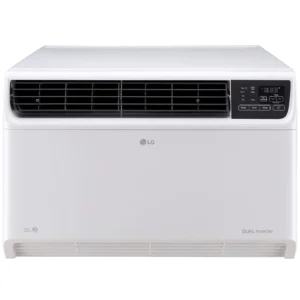
5.1 Overview
Embracing the era of smart technology, manufacturers have introduced window air conditioners with integrated smart features. These units leverage Wi-Fi connectivity and compatibility with virtual assistants for enhanced control and efficiency.
5.2 Features
5.2.1 Wi-Fi Connectivity for Remote Control
Smart window air conditioners feature Wi-Fi connectivity, allowing users to control the unit remotely through smartphones or other smart devices. This feature adds a layer of convenience and flexibility to the cooling process.
5.2.2 Compatibility with Virtual Assistants
These units are often compatible with popular virtual assistants like Amazon Alexa or Google Assistant. Users can issue voice commands to adjust settings, set schedules, or receive updates on the unit’s status.
5.3 Benefits
5.3.1 Convenient Control and Scheduling
The ability to control the air conditioner remotely provides unparalleled convenience. Users can adjust settings, set schedules, or turn the unit on/off from anywhere with an internet connection.
5.3.2 Enhanced Energy Efficiency through Smart Algorithms
Smart window air conditioners may incorporate advanced algorithms that optimize energy efficiency. By learning usage patterns and adjusting cooling cycles accordingly, these units can contribute to energy savings over time.
5.4 Ideal Use Cases
5.4.1 Tech-Savvy Consumers
Consumers who embrace smart home technology and seek seamless integration of their cooling solution into their smart home ecosystem will find smart window air conditioners appealing.
5.4.2 Homes with Existing Smart Home Ecosystems
For those with existing smart home ecosystems, including virtual assistants and smart devices, smart window air conditioners offer a cohesive and integrated cooling solution.
6. Energy-Efficient Window Air Conditioners
6.1 Overview
With a growing emphasis on sustainability, energy-efficient window air conditioners have become increasingly popular. These units prioritize energy conservation without compromising cooling performance.
6.2 Features
6.2.1 High Energy Efficiency Ratio (EER) or Seasonal Energy Efficiency Ratio (SEER) Ratings
Energy-efficient window air conditioners boast high EER or SEER ratings. These ratings indicate the unit’s efficiency in converting electricity into cooling power, providing insight into its energy-saving capabilities.
6.2.2 Advanced Cooling Technologies
To optimize energy consumption, these units often incorporate advanced cooling technologies. This may include variable-speed compressors, enhanced insulation, and other features designed to reduce energy waste.
6.3 Benefits
6.3.1 Lower Energy Bills with Effective Cooling
One of the primary benefits of energy-efficient units is the potential for lower energy bills. By maximizing cooling efficiency, these units deliver effective temperature control while minimizing electricity consumption.
6.3.2 Reduced Environmental Impact
Energy-efficient window air conditioners contribute to reduced environmental impact by minimizing energy consumption. This aligns with global efforts to promote sustainability and reduce the carbon footprint of cooling systems.
6.4 Ideal Use Cases
6.4.1 Consumers Prioritizing Energy Efficiency
For consumers who prioritize energy efficiency and seek to reduce their environmental impact, energy-efficient window air conditioners provide a responsible cooling solution.
6.4.2 Regions with High Electricity Costs
In regions where electricity costs are high, opting for an energy-efficient unit can result in significant cost savings over the long term, making it a practical investment.
7. Multi-Functional Window Air Conditioners
7.1 Overview
For those seeking versatility, multi-functional window air conditioners go beyond mere cooling to offer additional features. These units combine cooling, heating, dehumidifying, and air purification capabilities in one comprehensive package.
7.2 Features
7.2.1 Combined Cooling, Heating, and Dehumidifying Capabilities
Multi-functional window air conditioners are equipped to provide both cooling and heating functionalities. This makes them suitable for year-round use, adapting to the temperature needs of different seasons.
7.2.2 Air Purification and Fan-Only Modes
Some models include air purification features and fan-only modes. These additional functionalities contribute to improved indoor air quality and offer flexibility in how the unit is used.
Conclusion
In this comprehensive guide, we have explored the diverse world of window air conditioners, understanding their features, benefits, and ideal use cases across various types. From the timeless simplicity of Traditional Window Air Conditioners, offering cost-effective cooling for individual rooms, to the tailored solutions of Slider/Casement Window Air Conditioners designed for non-traditional window configurations, each type serves specific needs and preferences.
Through-the-Wall Air Conditioners provide a semi-permanent and aesthetically pleasing cooling solution for spaces with restrictions on window units, emphasizing security and long-term installation. Low-Profile Window Air Conditioners address the demand for units with reduced height, offering effective cooling without obstructing views and catering to rooms with limited vertical space.
The integration of smart technology has given rise to Smart Window Air Conditioners, providing convenient remote control and enhanced energy efficiency through advanced algorithms. For those prioritizing sustainability, Energy-Efficient Window Air Conditioners offer lower energy bills and reduced environmental impact, making them a responsible choice.
For the ultimate in versatility, Multi-Functional Window Air Conditioners combine cooling, heating, dehumidifying, and air purification features in one package, catering to year-round comfort and improved indoor air quality.
As consumers continue to seek personalized solutions for their cooling needs, this guide serves as a valuable resource in navigating the intricacies of window air conditioners, empowering individuals to make informed decisions based on their specific requirements and preferences. Whether it’s affordability, adaptability to unique window configurations, smart connectivity, energy efficiency, or multifunctionality, the diverse array of window air conditioners ensures there is a suitable option for every home and lifestyle.
